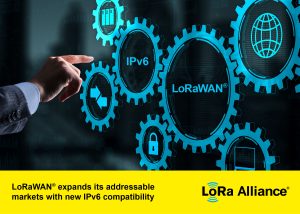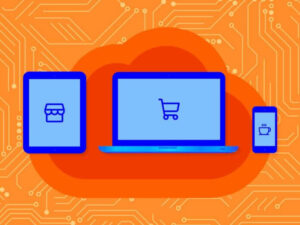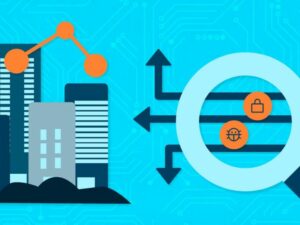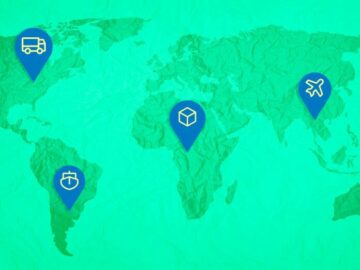
[embedded content]
Smart cities and utilities require resilient infrastructure that can withstand unexpected disruptions and challenges. From weather and natural disasters, to technology advancements and cyber threats, infrastructure needs to be adaptable and scalable. Phil Beecher, President and CEO of Wi-SUN Alliance, joins Ryan Chacon on the IoT For All Podcast to discuss building resilient smart cities and utilities with IoT and the Wi-SUN standard.
About Phil Beecher
Phil Beecher is the President and CEO of the Wi-SUN Alliance. Since 1997, Phil has played a key role in the development of communications standards including Bluetooth, Wi-Fi, IETF, IEEE and cellular and the specification of test plans for a number of Smart Utilities Network standards, including Advanced Metering Infrastructure (AMI) and Home Energy Management Systems. He is a graduate of the University of Sussex with a degree in Electronic Engineering and holds patents in communications and networking technology.
Interested in connecting with Phil? Reach out on LinkedIn!
About Wi-SUN Alliance
Wi-SUN Alliance is a global association of industry leading companies driving the adoption of interoperable wireless solutions for use in smart utilities and smart cities. Wi-SUN® specifications bring Smart Ubiquitous Networks to service providers, utilities, municipalities/local government and other enterprises, by enabling interoperable, multi-service and secure wireless mesh networks. Wi-SUN can be used for large-scale outdoor IoT wireless communication networks in a wide range of applications.
Key Questions and Topics from this Episode:
(01:10) Introduction to Phil Beecher and Wi-SUN Alliance
(02:13) Understanding the Wi-SUN standard
(02:32) Origins and applications of Wi-SUN
(04:05) Benefits and use cases of Wi-SUN
(07:21) Challenges in large-scale outdoor IoT deployments
(12:20) Importance of interoperability in IoT solutions
(15:18) Future of Wi-SUN technology and IoT adoption
(19:52) Learn more and follow up
Transcript:
– [Ryan] Wi-Fi issues issues are the leading cause of smart device service calls and among the most expensive to support. Without visibility into the customer’s home network, your support teams are basically flying blind. RouteThis is changing that. With their 100 percent software based approach, agents can see the status of the customer’s network and identify any issues in real time, so they can troubleshoot and resolve connectivity problems in no time. Feeding companies like Arlo, Nanoleaf, and Traeger Grills trust RouteThis to reduce wifi related tickets and product returns while increasing customer satisfaction. Visit routethis. com backslash smart dash home to take customer support to the next level with RouteThis.
Welcome, Phil, to the IoT For All Podcast. Thanks for being here this week.
– [Phil] Oh, thanks, Ron. Thanks for inviting me.
– [Ryan] Absolutely. Excited to have this conversation. I believe we met at a, um, an IoT conference last year, but I remember seeing, this is where I came across Wi-SUN for the first time, and that’s where it, uh, it, it kind of eventually led to this conversation, which I’m very excited about.
– [Phil] Yeah, I believe it was in Austin, actually, at the, uh, IoT World, or.
– [Ryan] Let me go ahead and ask you to introduce yourself and the Alliance to our audience just to kind of kick things off and frame this up for them.
– [Phil] I’m Phil Beecher, I’m an engineer by background, been doing it too long to remember actually. Um, And White Sun Alliance, we formed in end of 2011, beginning of 2012, really to develop testing and certification program for, uh, large scale outdoor IoT network communications technology. That was based on a particular wireless standard called IEEE 802. 15 4G. So that’s where we came from. We started with eight founding member companies. We’re now around 350 members. Um, we’ve got over 300 certified products. Uh, so from different manufacturers and some pretty large deployments across the U. S., Latin America, and Asia.
– [Ryan] Fantastic. So, so talk to me about kind of the, the Wyson standard in general, the technology, what is it built for? What is it best optimized for? How does it kind of compare to other connectivity technologies that are on the market? And how should people really be thinking about this in the full spectrum of connectivity technologies?
– [Phil] Okay, so the background of the technology and the alliance is really from the utility industry. So way back, maybe 15 years ago, um, some of the large US utilities were deploying proprietary wireless mesh technology. And I’ll describe what that means a little bit later. Um, and they didn’t want to be locked into a single vendor.
So they were looking for, uh, options to purchase products from multiple vendors and create an ecosystem. So that’s what we did with Wi-SUN Reliance. Um, and the, so the background, these large scale, uh, smart meter networks, uh, such as the Pacific Gas and Electric installation around, uh, the Bay Area.
Florida Power and Light in Miami. So we’re talking 4 million plus smart meters on a network. So the idea of using something like wireless mesh. Is that it provides a reliable and resilient connectivity. So if you lose connections um, and that could be sort of temporary loss if you know if a truck or a crane moves across in front of One of the connection paths you might lose the connectivity on something like a cellular network.
So with wireless mesh It can, you have multiple paths and the network can reroute around, um, any points of failure on the network.
– [Ryan] Tell me a little bit about kind of the use cases that this is optimized for. Obviously, many people out there have kind of looked at everything from Wi Fi to cellular to Bluetooth, LoRa, you name it, and they’re all kind of built in one way or in a sense, they have their benefits, they have their drawbacks, and they definitely have their place in the IoT industry when it comes to different solutions and what they’re best used for to fit.
Everything from, you know, the cost perspective, which obviously influences the decision, but also in the latency, the bandwidth, speed, all those different things. So, so where does this, um, I guess talk us through some of the use cases. It’s obviously sounds like it’s more large scale outdoor. You talked about smart metering, but just what are some other of other areas that this Um, that we would think about why sun being used or can start to compare it in our minds to the other technologies are out there so that we know what the real benefits are from, um, from, from just like kind of, it’s, it’s the characteristics of it.
– [Phil] Background was really smart meter deployments. So this is where you maybe have a dense urban environment. Um, so you don’t necessarily good, get good connectivity from cellular or even from Laura that you get shadows, uh, when you have lots of high rise. So the fact that you can do multi hopping, um, that helps.
So that’s high, high resilience, high reliability. Um, also coming from the utility background, we have, uh, enterprise grade security built in. So every device has a certificate in it and it authenticates when it joins the network and ensures that it’s on the correct network and, um, that it’s allowed to join that network.
And from those smart meter networks that that model has grown into far more smart grid type applications, so As you add renewables onto a grid the communication requirements become More stringent. So if you’re looking at putting wind and solar onto the same network, then you may benefit from Uh, peer to peer communication.
So rather than all the data being collected from a meter going up into a utility back office, then being processed and then being used to control the grid, you can collect data locally and do more edge processing. So one of the. You know, one of the great applications for this is in things like outage management, where, um, and this has been proven in places like Florida, where you have hurricanes that take down part of the grid, maybe take part, uh, down part of traditional communications infrastructure as well.
Um, you have parts of the mesh network are still up and running. They can communicate. Um, alert the utility company where the outages are and in some cases communicate directly with the distribution control equipment to reroute power, uh, so you can minimize the impact.
– [Ryan] Be curious to hear your perspective also, just when we think about large scale outdoor IoT deployments in general, there are a lot of different factors that come into influencing how you would build and deploy, how, how to be successful in deploying those types of solutions.
And it seems as if obviously a lot of the deployments that you’re focused on, if not all deployments you’re focused on are really in that kind of large scale outdoor environment. What are some of the biggest challenges for people that are listening to this who may not be as familiar With large scale outdoor deployments.
Um, what are some of those challenges that really come to light when trying to successfully deploy in the outdoors and at a large scale? Um, because obviously it’s different from indoor or small scale, kind of different, different kinds of deployments. But I’m just curious, what are the unique challenges that come with that, um, large scale outdoor deployment side of things?
– [Phil] Well, I think the biggest problem is when you’ve got static devices, IOT devices, then you can’t move them a couple of, uh, couple of feet or a couple of yards to get a good signal. So the biggest problem is when you have, uh, you know, the dense urban environments with urban canyons. Uh, whether it’s high rise, uh, with concrete, steel and glass, or whether it’s, uh, traditional old buildings like you have in the City of London.
You need the signal to get to where you want to place the device, and you can’t move the devices. So, coverage. Is definitely a potential issue. I think The other thing is really with security as well That’s not just the securing of devices, but it’s the whole security life cycle So for example, tokyo has got 29 million smart meters Most of which are on wireless mesh There are some on cellular, a few on powerline, but I think 95 percent are wireless mesh.
So how do you control the life cycle of, uh, 29 million smart meters? The ability to use technology that’s proven at scale for managing the security of those devices is also really important.
– [Ryan] Yeah, it’s, it’s a very interesting environment as we’ve talked to many different experts around the industry over the last few years, um, just to see where deployment adoption has grown, but also to understand the different factors that influence.
Deployment being successful or not, and when you get outdoors, especially in cities, um, there are a lot of unique challenges that will oftentimes the people that are. looking to have their problem solved may not know about or really think about or understand to be able to find the right technology or solution that that fits their needs.
– [Phil] Yeah, I think so. I mean, I’ve mentioned mostly utility industry, but more recently we’ve seen traction in Smart city deployments where, uh, a municipality will install streetlight network. Um, and then that gives them the canopy connectivity that they can then install, uh, battery operated devices. So one of the other, one of the other benefits of using a fairly open technology and using, uh, internet protocols, uh, is that you can have a multi service network.
So rather than having application silos where you maybe have street lighting as one application and smart parking as another, or smart signage, you can be a lot more open. The communications infrastructure can support all of those applications concurrently. So therefore your application layer can maybe join things together as you get more creative.
So. Smart signage and smart parking is quite an obvious one. If you know where the spare parking is then you can, uh, sign it and drivers can be directed to the place where they’re going to find a parking space.
– [Ryan] I’ve heard of that. Um, I mean, I’ve talked to other people who have mentioned a similar thing, talking about installing the streetlights to act as, as you put it, the canopy to just disperse the connectivity across the city or an area.
Um, and then that allows you to have the potential to deploy other solutions on the network, which is. The powers of, you know, of, of building a, a, a flexible and scalable iot solution.
– [Phil] I mean, uh, another consideration for people is what sort of model model do they want for device management? And, um, you know, how do you pay for this?
Uh, do you want to use a, you know, an opex model like the cellular industry does or. Certainly the large utilities quite often either manage their own networks or will subcontract a private organization to manage the network on their behalf. rather than doing it through a cellular operator.
– [Ryan] When it comes to the interoperability of the technology and IOT solutions that you’ve worked on, when we get this, we talk about smart cities in general, there’s, there’s also another side that we don’t cover as much.
And that’s kind of the emergency kind of response side, the disaster preparedness side, and IOT is playing a pretty big role. In that space in cities these days, when it comes to building a solution, making sure the technology, everything is interoperable. Why is that such an important benefit to think to make sure to be, um, to have when it comes to that emergency response, disaster preparedness type use cases as far as, uh, disaster management is concerned.
– [Phil] You need to know that the network is going to be reliable and resilient, that it’s going to cope with the sort of scenarios that you get from an emergency situation. You also need to know that, uh, there is going to be a continuity of supply of the equipment that you need to connect into that network.
So as far as interoperability is concerned, That ensures that there are multiple vendors, uh, so with YSAL Alliance, for example, we have five or six radio silicon, uh, manufacturers that have proven they have interoperable devices, plus You know, tens of product vendors that are doing this. So that means you can buy the right devices to fit onto the network.
– [Ryan] Absolutely. It’s, it’s been, it’s been great to see just the, the growth of the industry from a technology perspective, because a hardware connectivity platforms. applications, um, because you’re able to find things more tailored towards that particular problem, particular use case, which allows you to then have something optimized to meet the ROI goals that you have, meet budget, you know, and so you’re not stretching technology to you do something that’s not made for, or having technology that that’s in a sense overkill as well.
– [Phil] Right, exactly. So again, with YSUM, we are based on open standards, which means that technology can evolve. And you don’t have stranded devices on the network. So, for example, our original network connectivity was restricted to around 300 kilobit per second. Uh, now the latest version supports, um, much higher data rates, up to eight times that, plus slower data rates to give you a longer range, all in a dynamically switchable environment.
So, It’s very flexible when it comes to, um, connectivity.
– [Ryan] So, so let me ask you, as we start to wrap up here, um, what, what you, you mentioned a second ago, you’re starting to see more adoption in other areas. So what is the future in your, from your perspective, look like for adoption of Wi-SUN technologies?
What, what kind of areas do you feel like this eventually starts getting into that maybe you’re not into yet? Where are you seeing that momentum? What are you most excited about? Where, what should our audience really be paying attention to?
– [Phil] Well, we’ve primarily focused on the utilities and the smart cities, but we’re seeing, we’re seeing more growth in other areas such as smart agriculture, for example.
Um, so there is a, I discovered recently, there is a seaweed farm in Japan that’s using WWi-SUN technology to, uh, basically monitor nutrients, uh, growth rate, et cetera. Uh, for growing seaweed, and of course technology works really well over water, so it’s great for that. Greenhouse management is another area.
Um, we’ve actually, there’s a large deployment again in Japan for, uh, medical, uh, applications. So this is health and well being, uh, where Wison is just one technology that’s being used, uh, to monitor, uh, older people in their, so, uh. They’re in their homes. Um, they have, uh, something like a blood pressure monitor or heart rate monitor on.
Um, the technology automatically sends any anomalies to, uh, an, uh, central database where it’s processed. And if they detect an anomaly, then the, uh, practitioner rings the person up to see if they’re feeling okay. So that’s sort of large scale, uh, deployments that. Really we weren’t expecting but um, it’s found the use there.
– [Ryan] It’s interesting because a lot of technologies were kind of built for You know, a couple of different use cases in mind, but as people discover and come up with new problems that they need to solve, um, having the, that available information and understanding of the different technologies that are out there allows them to then start to pick and choose.
And like you said, you’re going to learn about. Your technology potentially being used in or for use cases that you might not have envisioned when you first started because you’re so focused on smart metering utilities, you know, smart, smart city space. Um, it’s very interesting just to kind of hear the stories of these companies that are kind of really.
powering a lot of these technologies, advocating for these technologies through alliances and other means, just seeing how it evolves, even beyond kind of maybe where they thought it would go at the time I spoke with them.
– [Phil] You mentioned earlier about cost as well. So certainly with Wysom, because we have, you know, so many radio, uh, device manufacturers, the cost of the silicon is fairly cheap.
Um, you know, it’s not, it’s not a revolutionary brand new technology, some of this it’s, um, it’s evolving, but. You know, so we’re not in the same league as 5G. Wi-SUN’s never going to be streaming video, uh, from a soccer match.
– [Ryan] But that’s not what it’s intended for, you know what I mean? Like, and, and, and the people who need Wi-SUN technology don’t need that.
And if they did, it would probably be a lot more expensive, right?
– [Phil] Exactly. And their batteries wouldn’t last for, you know, 10 or 15 years in a gas or water heater.
– [Ryan] That’s a great point. I think that’s the important thing to think about. Different options for on the connectivity side for IoT solutions, and I think it’s a very big benefit for the overall industry because, like we said before, it’s something that allows you to kind of pick and choose the most optimized.
technology for your individual use case to work with your hardware, to work with the software on the application side, to fit everything you need in order for this solution to be something that truly solves your problem across all the different check boxes that you have. And if you’re spending more money because the connectivity option you chose is not correct, then you have somewhere else to look to find something that’s more optimized.
For for that use case, which is why I think we’ve seen adoption grow a ton in the I. O. T. Space over the last couple years because these technologies are maturing. Their new ones are coming out. We’re understanding how they all work and how they all fit together. And I think that’s a really big benefit for people out there looking to adopt IoT.
– [Phil] Yeah, I think so. And I think, um, you know, it’s going to settle down. We’re still, I think we’re still in fairly early stage with some large scale IoT. And standards based technology is obviously, um, key to all of this. If you have an open standard, then you have a, a, a route map to the future.
– [Ryan] So Phil, if our audience wants to learn more about Wi-SUN, about the Alliance, just generally paying, you know, stay, stay in touch, pay attention, follow up.
What’s the best way they can do that?
– [Phil] Visit the website, which is Wi-SUN. org. So W I S U N. org. Um, or they can look me up on LinkedIn and drop me an email. I try and respond to most.
– [Ryan] Fantastic. Well, Phil, thank you so much for being here. It’s a fantastic conversation. We get to have a lot of exciting stuff going on, um, with, with YSON.
So I’m really excited to keep an eye on it. I’m glad that our audience is, um, getting the opportunity to learn more about it through this conversation and hopefully diving in further after the facts. So, so thank you for your time. Yeah. Thank
– [Phil] you very much for, um, having me.
- SEO Powered Content & PR Distribution. Get Amplified Today.
- PlatoData.Network Vertical Generative Ai. Empower Yourself. Access Here.
- PlatoAiStream. Web3 Intelligence. Knowledge Amplified. Access Here.
- PlatoESG. Carbon, CleanTech, Energy, Environment, Solar, Waste Management. Access Here.
- PlatoHealth. Biotech and Clinical Trials Intelligence. Access Here.
- Source: https://www.iotforall.com/podcasts/e323-building-resilient-smart-cities
- :has
- :is
- :not
- :where
- $UP
- 01
- 07
- 10
- 100
- 12
- 13
- 15 years
- 15%
- 19
- 20
- 2011
- 2012
- 29
- 300
- 32
- 350
- 52
- 5G
- a
- ability
- Able
- About
- about IT
- absolutely
- across
- Act
- actually
- add
- adopt
- Adoption
- advanced
- advancements
- advocating
- After
- again
- agents
- ago
- agriculture
- ahead
- Alert
- All
- Alliance
- Alliances
- allowed
- allows
- also
- america
- among
- an
- and
- Another
- any
- Application
- applications
- approach
- ARE
- AREA
- areas
- around
- AS
- asia
- ask
- Association
- At
- attention
- audience
- austin
- authenticates
- automatically
- available
- back
- background
- Bandwidth
- based
- Basically
- batteries
- battery
- Bay
- BE
- because
- become
- been
- before
- Beginning
- behalf
- being
- believe
- benefit
- benefits
- BEST
- Beyond
- Big
- Biggest
- Bit
- blind
- blood
- Blood Pressure
- bluetooth
- boxes
- brand
- Brand New
- bring
- budget
- build
- Building
- built
- but
- buy
- by
- called
- Calls
- came
- CAN
- Canopy
- case
- cases
- Cause
- cellular
- central
- ceo
- certainly
- certificate
- Certification
- Certified
- cetera
- challenges
- changing
- characteristics
- cheap
- check
- Choose
- chose
- Cities
- City
- collect
- COM
- come
- comes
- coming
- communicate
- Communication
- Communications
- Companies
- company
- compare
- concerned
- concrete
- Conference
- Connect
- Connecting
- connection
- Connections
- Connectivity
- connectivity problems
- consideration
- content
- continuity
- control
- Conversation
- correct
- Cost
- could
- Couple
- course
- cover
- coverage
- create
- Creative
- curious
- customer
- Customer satisfaction
- Customer Support
- cyber
- cycle
- Dash
- data
- Database
- Days
- decision
- definitely
- Degree
- dense
- deploy
- deploying
- deployment
- deployments
- describe
- detect
- develop
- Development
- device
- Devices
- DID
- different
- directed
- directly
- disaster
- Disaster Preparedness
- disasters
- discover
- discovered
- discuss
- disruptions
- distribution
- diving
- do
- does
- doing
- Dont
- down
- drawbacks
- drivers
- driving
- Drop
- dynamically
- E&T
- Earlier
- Early
- early stage
- ecosystem
- Edge
- either
- Electric
- Electronic
- else
- embedded
- emergency
- enabling
- end
- energy
- engineer
- Engineering
- ensures
- Enterprise
- enterprises
- Environment
- environments
- envisioned
- episode
- equipment
- especially
- Even
- eventually
- Every
- everything
- evolve
- evolves
- evolving
- exactly
- example
- excited
- exciting
- expecting
- expensive
- experts
- eye
- fact
- factors
- facts
- Failure
- fairly
- familiar
- fantastic
- far
- farm
- feeding
- feel
- feeling
- Feet
- few
- Find
- First
- first time
- fit
- five
- flexible
- florida
- flying
- focused
- follow
- For
- formed
- found
- founding
- FRAME
- from
- front
- full
- full spectrum
- further
- future
- GAS
- General
- generally
- get
- getting
- Give
- gives
- glass
- Global
- Go
- Goals
- going
- good
- got
- Government
- grade
- graduate
- great
- Grid
- Grow
- Growing
- grown
- Growth
- Hardware
- Have
- having
- he
- Health
- hear
- heard
- Heart
- helps
- here
- High
- higher
- holds
- Home
- Homes
- Hopefully
- How
- How To
- HTTPS
- i
- I’LL
- idea
- identify
- IEEE
- if
- Impact
- important
- in
- In other
- Including
- increasing
- individual
- Indoor
- industry
- influence
- influencing
- information
- Infrastructure
- install
- installation
- installing
- intended
- interesting
- Internet
- Internet protocols
- Interoperability
- interoperable
- into
- introduce
- inviting
- iot
- iot devices
- issue
- issues
- IT
- Japan
- join
- Joins
- jpg
- just
- just one
- Keep
- Key
- kick
- Kind
- Know
- large
- large-scale
- Last
- Last Year
- Latency
- later
- latest
- Latin
- latin america
- layer
- leading
- League
- LEARN
- Led
- let
- Level
- Life
- light
- Lighting
- like
- Listening
- little
- locally
- locked
- London
- Long
- longer
- Look
- look like
- looked
- looking
- lose
- loss
- Lot
- lots
- made
- make
- Making
- manage
- management
- managing
- Manufacturers
- many
- many people
- map
- Market
- Match
- May..
- maybe
- me
- mean
- means
- medical
- Meet
- member
- Members
- mentioned
- mesh
- Mesh network
- met
- Miami
- might
- million
- mind
- minds
- minimize
- model
- Momentum
- money
- Monitor
- more
- most
- mostly
- move
- moves
- much
- multi
- multiple
- name
- Natural
- necessarily
- Need
- needs
- network
- networking
- networks
- never
- New
- next
- no
- now
- number
- obvious
- of
- off
- Office
- often
- oftentimes
- oh
- Okay
- Old
- older
- on
- ONE
- ones
- open
- operated
- operator
- Opportunity
- optimized
- Option
- Options
- or
- order
- organization
- original
- Other
- our
- out
- outage
- Outages
- Outdoor
- outdoors
- over
- overall
- own
- Pacific
- parking
- part
- particular
- parts
- Patents
- paths
- Pay
- paying
- peer
- peer to peer
- People
- per
- percent
- person
- perspective
- PHIL
- pick
- Place
- Places
- plans
- Platforms
- plato
- Plato Data Intelligence
- PlatoData
- played
- playing
- plus
- podcast
- Point
- points
- potential
- potentially
- power
- powers
- president
- pressure
- pretty
- primarily
- private
- probably
- Problem
- problems
- processed
- processing
- Product
- Products
- Program
- proprietary
- protocols
- proven
- providers
- provides
- purchase
- put
- Putting
- Questions
- quite
- Radio
- range
- Rate
- Rates
- rather
- reach
- real
- real-time
- really
- recently
- reduce
- related
- reliability
- reliable
- reliance
- remember
- Renewables
- require
- Requirements
- resilience
- resilient
- resolve
- Respond
- response
- restricted
- returns
- revolutionary
- right
- Rise
- ROI
- Role
- RON
- Route
- running
- Ryan
- s
- Said
- same
- satisfaction
- scalable
- Scale
- scenarios
- Second
- secure
- securing
- security
- see
- seeing
- seems
- seen
- sends
- sense
- service
- service providers
- settle
- should
- side
- sign
- Signal
- Silicon
- silos
- similar
- since
- single
- situation
- SIX
- small
- smart
- Smart Cities
- Smart City
- So
- Soccer
- Software
- solar
- solution
- Solutions
- SOLVE
- solved
- Solves
- some
- something
- somewhere
- Space
- specification
- specifications
- Spectrum
- speed
- Spending
- Stage
- standard
- standards
- start
- started
- Starting
- starts
- Status
- stay
- steel
- Still
- Stories
- streaming
- street
- stringent
- successful
- Successfully
- such
- Sun
- supply
- support
- Supports
- sure
- Systems
- T
- tailored
- Take
- Talk
- talking
- teams
- Technologies
- Technology
- tell
- temporary
- tens
- test
- Testing
- than
- thank
- thanks
- that
- The
- The Future
- their
- Them
- then
- There.
- therefore
- These
- they
- thing
- things
- think
- Thinking
- this
- this week
- those
- thought
- threats
- Through
- tickets
- time
- times
- to
- together
- tokyo
- Ton
- too
- Topics
- touch
- towards
- traction
- traditional
- truck
- truly
- Trust
- try
- trying
- type
- types
- ubiquitous
- understand
- understanding
- Unexpected
- unique
- university
- urban
- us
- use
- use case
- used
- using
- utilities
- utility
- vendor
- vendors
- version
- very
- Video
- visibility
- Visit
- W
- want
- wants
- was
- Water
- Way..
- we
- Weather
- Website
- week
- WELL
- were
- What
- What is
- when
- whether
- which
- while
- white
- WHO
- whole
- why
- Wi-fi
- wide
- Wide range
- wifi
- will
- wind
- wireless
- with
- without
- Work
- worked
- works
- world
- would
- wrap
- year
- years
- yet
- you
- Your
- yourself
- youtube
- zephyrnet








